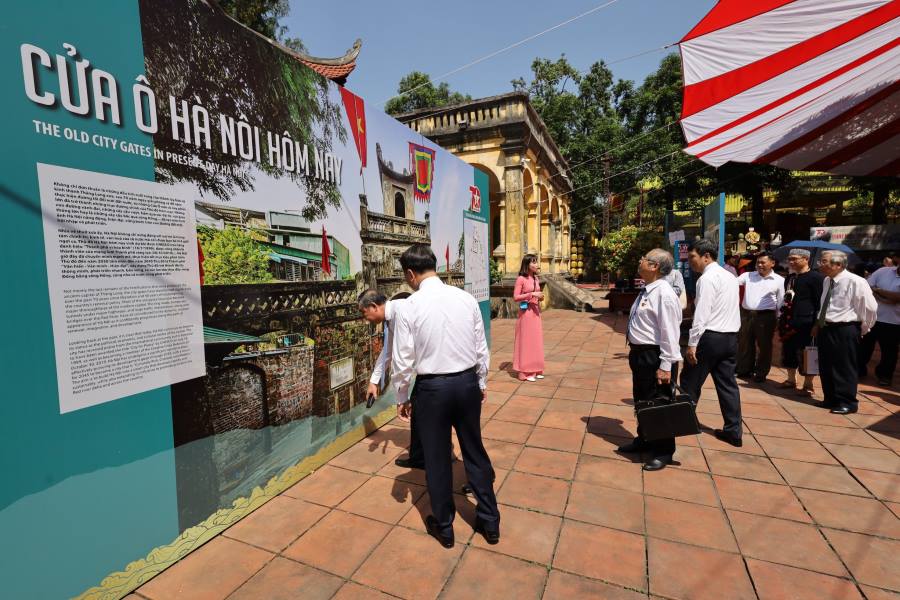
Themed ‘Hanoi and its ancient gates’, the exhibition is being jointly held by the National Archives Center I, the Hanoi Department of Home Affairs, and the Thang Long-Hanoi Heritage Conservation Centre to celebrate the 70th anniversary of Hanoi’s Liberation Day (October 10, 1954-2024).
The gates were a unique feature of Hanoi. These were the gateways to enter and exit the ancient Thang Long Citadel.
According to historical records, there was a wall with 21 gates surrounding the citadel, including at Cau Giay, Cau Den, Cho Dua, Dong Mac, and Quan Chuong. Quan Chuong is the only gate remaining today while the others became public sites or were damaged during the wartime.
In addition to serve as gateways connecting traffic, the gates of Hanoi were also construction to protect the citadel. The gates once witnessed various milestones in Hanoi’s history. Notably, on October 10, 1954, the Vietnamese the revolutionary troops marched into the city filled with flags, flowers, and the euphoria of victory, to take over it from the French forces.

The exhibition ‘Hanoi and its ancient gates’ introduces 200 documents and images, which sourced from collections of the French School of the Far East in Hanoi (EFEO), the Institute of Social Science Information, the National Archives Centre I, and the Archive Centre of Hanoi City History.
Through historical images, maps, drawings, and documents written in in French and Sino-Vietnamese characters, the exhibition gives an insight into daily activities of residents living around the gates, and the disappearance of most of them in the late 19th and early 20th centuries, while educating young generations about national traditions and encouraging them to contribute more to Hanoi’s development.
Apart from the stories relating to the gates, the exhibits also capture Hanoi’s development over the past seven decades.
The works on display are arranged in three topics: ‘The Ancient Gates’, ‘The Gates of Victory’, and ‘Hanoi’s Gates Today’.












